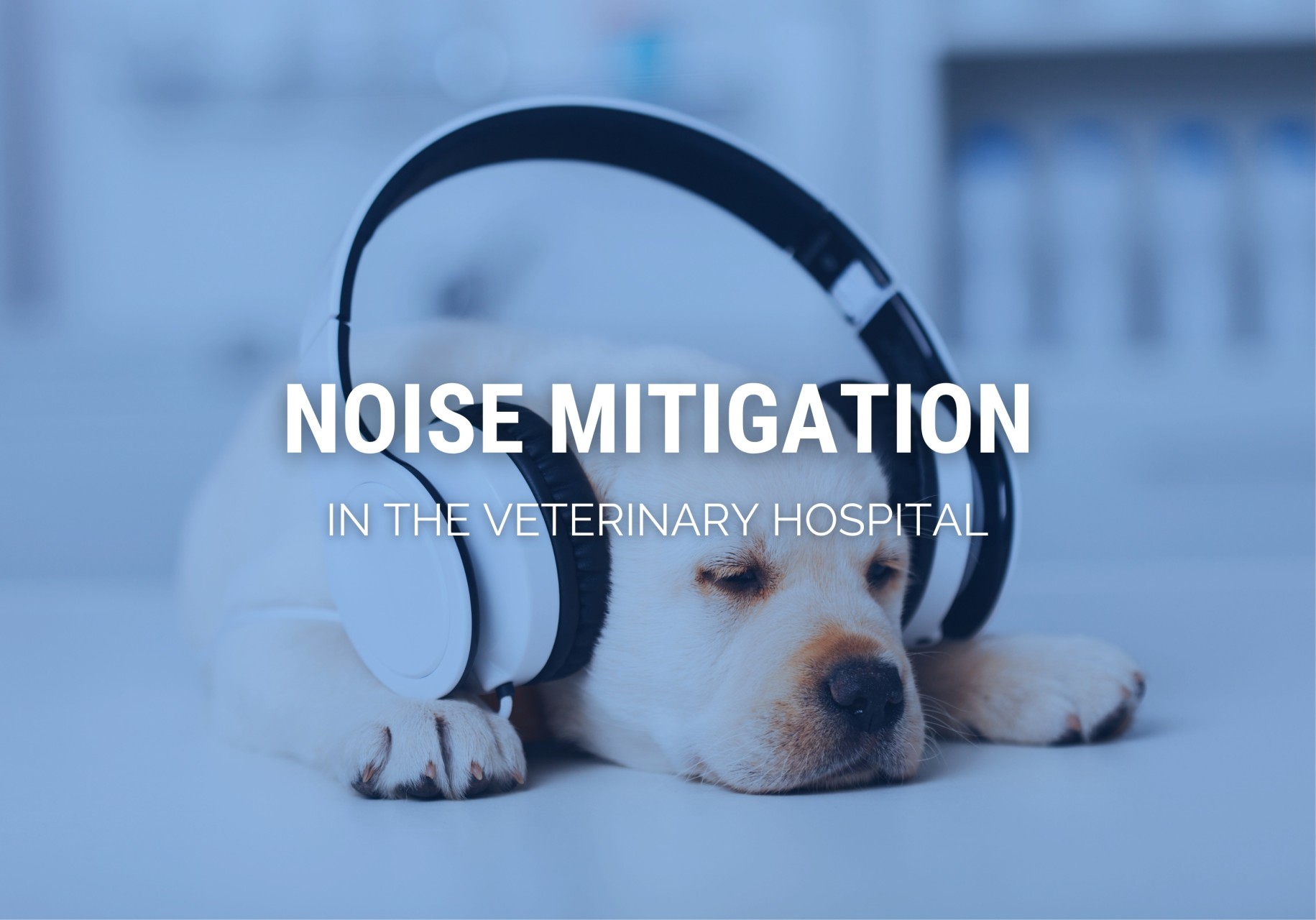Trending
Building Design for Animals
Article by Paul Gladysz, AIA, NCARB, CSI
Sound Off: Noise Control Through Architecture
Noise in an animal care environment is more than a nuisance; it's a significant stressor that impacts patient health, staff well-being, and client satisfaction.

As a leading factor in Fear, Anxiety, and Stress (FAS) for animals, mitigating sound is a crucial component of modern, compassionate veterinary hospital design. Achieving noise control in your facility will have a huge impact on clients, patients, and staff.
The Harmful Effects of Noise in Animal Care
From barking dogs and yowling cats to ringing phones and equipment, the veterinary hospital can be a noisy environment that negatively affects all three user groups—clients, patients, and staff.
Clients
Walking into a cacophony can feel like walking into chaos. Excessive noise makes clients feel uneasy, reflects poorly on professionalism, and makes sensitive conversations difficult. Mitigating sound in client areas helps foster calm and professionalism, improving communication and the overall client experience.
Patients
For animals, the hospital experience is inherently stressful. Loud, unfamiliar, or continuous noise acts as a powerful stressor, spiking cortisol levels, heart rate, and blood pressure. This distress actively works against recovery—it can prolong healing, mask crucial clinical symptoms, and trigger anxiety-driven behaviors.
Noise mitigation is critical because it promotes a calming environment that speeds recovery, allows for accurate patient monitoring, and supports modern low-stress handling protocols. Critically, controlling noise is a main tenet of Fear Free© design for maximizing patient comfort and wellbeing.
Staff
Hospital personnel are exposed to high decibel levels nearly every day. Exposure over time leads to fatigue, stress, concentration difficulty, and potential hearing damage. Working to control the noise creates a healthier workspace, reduces staff turnover, and improves focus, leading to better clinical decisions and patient care.
Achieving Noise Control Through Architectural Design
Effective noise mitigation requires a multi-pronged approach rooted in expert architectural design and strategic planning. BDA understands that sound management is not a single fix; it requires specialized knowledge and custom solutions tailored to your facility's unique layout and operational flow.
We use a comprehensive strategy based on four core principles to manage sound propagation:
1. Reduction: Eliminating the Source
The most effective strategy is to eliminate the source of noise as much as possible. Since vocalization is primarily driven by fear and anxiety, this focuses on minimizing those triggers by strictly adhering to principles like species separation and designing environments that reduce stress for both pets and owners.
2. Separation: Using Distance as a Buffer
This involves the strategic placement of major noise-generating spaces (e.g., dog wards, treatment areas) away from sensitive or client-facing areas (e.g., cat wards, exam rooms, offices). We use distance and intervening buffer spaces to naturally reduce sound intensity.
3. Absorption: Reducing Reverberation
This involves using specific materials to trap sound energy within the room where it is generated, preventing sound waves from bouncing around. Strategic use of acoustic ceiling tiles, specialized wall panels, and soft surfaces is key to lowering the sound intensity at the source.
4. Barriers: Isolation and Sound Blocking
Barriers are purpose-built structural elements designed to block sound transmission between the hospital's three main zones (client-facing, clinical, and support). Constructing sound-resistant walls, installing specialized door seals, and eliminating potential noise conduits are critical components of a successful sound isolation plan.
Sound Design for Better Care
Ultimately, sound design is not just an architectural detail—it is a fundamental act of compassionate veterinary care. By implementing a thoughtful, multi-layered mitigation strategy, hospitals actively transform a chaotic, stressful environment into a space that promotes peace and healing.
Investing in superior sound control is a direct investment in the long-term health of your patients, the improved focus and retention of your staff, and the elevated professional experience you provide every client.
This commitment aligns perfectly with BDA’s dedication to Fear Free© design principles. As a certified Fear Free professional, BDA's Partner and Director of Design, Becky Gasser, ensures these key elements are built into every solution we create.
Ready to turn down the volume in your facility?
The technical details of achieving effective sound mitigation—from selecting the correct materials to constructing structural barriers—are complex and project-specific. Don't guess at the technical specifications. Contact BDA today to learn how our architectural expertise in noise control can ensure your next veterinary project delivers the best possible acoustic environment for everyone.

